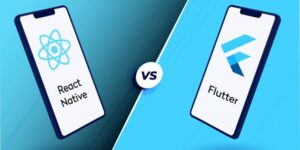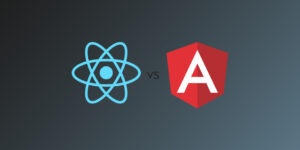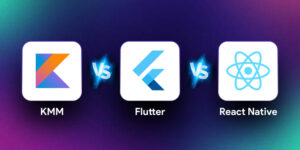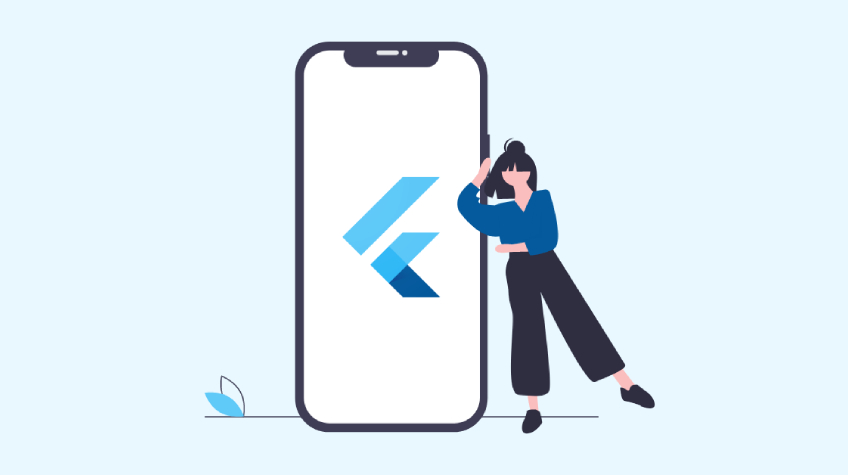
Welcome to the ultimate guide to Flutter Framework in 2026! This comprehensive resource will give you everything you need about this robust, industry-leading framework. Flutter is a cutting-edge mobile app development tool used by countless developers and businesses worldwide to create intuitive user interfaces quickly and efficiently.
Its growing popularity stems from its fast setup time, minimal coding requirements, extensive library of components, and an ever-expanding set of features allowing users more flexibility than similar frameworks on the market today. This guide aims to give readers insight into how they can use Flutter’s unique advantages for their projects while pointing out common pitfalls one must avoid during the development or deployment phases.
After reading this blog, we are confident that your knowledge base on Flutter will be elevated, helping you take your applications further than envisioned! In this blog, we go through the guide to Flutter Framework in 2026.
What is Flutter?
Flutter is an open-source mobile UI framework that Google developed. It lets users fast and efficiently make native iOS, Android, and web apps with one codebase. Flutter offers a way of creating beautiful visuals and dynamic experiences in your app without learning multiple languages or platforms.
With features like Hot Reloading that can help you speed up development time and custom widgets for speeding up UI/UX creation processes while maintaining high standards of quality, there’s no wonder why more businesses are choosing Flutter over alternative solutions!
What are the Advantages of Flutter?
Flutter is the most advanced mobile development platform available in today’s market. It offers developers a plethora of advantages, ranging from fast prototyping to cost efficiency and easy maintenance. With its simple yet powerful language – Dart – it reduces development time significantly without compromising on features or performance. Additionally, native-like coding allows for pixel-perfect UI/UX designs that look good across all devices regardless of their hardware specs.
Flutter also provides robust back-end support with Firebase integrations which makes app creation effortless even for beginners in the App Development field who are looking into developing an application quickly while focusing more on design and user experience than having complex underlying infrastructure concerns such as those posed by manual coding techniques like Native Mobile Apps Development with Java/Kotlin (Android) or Swift (iOS).
If you’d like a deeper look into Flutter pros and cons in 2026, this article covers everything you need.
Here are the steps to flutter framework in 2026
1. Installation and setup
Installing and setting up a flutter framework can be tricky, but with these pro tips, you’ll have it running in no time. First, ensure your system meets the requirements for installation — this includes having at least 6GB of free storage on your device and an internet connection. Once that’s squared away, navigate to Flutter’s official website to download the app installer package compatible with your machine type (Mac/Linux/Windows).
Finally, go through the setup process, which typically involves installing all components necessary for development as specified by Flutter documentation guidelines – some examples are Visual Studio Code and Android SDK Platform Tools. If you are stuck during the setup phase, don’t forget there are always plenty of online tutorials!
2. Project creations
Creating a fantastic project with the Flutter Framework is easy. Here are a few Pro Tips that can help you get quickly started:
1. Familiarize yourself with Flutter before using it – take some time to understand its fundamentals and ensure your development environment is set up correctly.
2. Use the ‘flutter create’ command to generate projects automatically in no time, complete with configurations already implemented for you. This will allow you to expedite future builds of your app significantly!
3. Start small by creating simple layouts first, then expanding on them as needed – think ‘build apps one feature at a time style but focus more on structure rather than features themselves initially so they remain flexible later down the line when changes need making or new functionality added.
4. Use hot reload whenever possible because this allows faster iteration over code pieces while developing, saving time and effort dealing with even extensive changes across multiple elements during build cycles constantly throughout your work cycle.
3. Flutter Basics
Flutter is an open-source mobile framework developed by Google. It uses the Dart programming language, emphasizing flexibility and speed in creating high-performance applications for both Android and iOS platforms. Familiarize yourself with Dart syntax, data types, functions, and object-oriented concepts. With Flutter’s hot reload feature, developers can quickly change their code while seeing its effects on a device or emulator almost instantly – making it ideal for rapid prototyping cycles.
Additionally, due to Flutter’s efficient native performance capabilities, there is little need for manual optimization when developing apps with this platform, meaning you can spend more time focusing your efforts on design rather than debugging complex engineering problems. So if you’re looking to get into app development fast, check out the growing list of tools Flutter offers!
4. Flutter Widgets
Flutter Widgets are powerful for creating beautiful, interactive, and engaging user interfaces. With widgets like container, Text, listview, column, and more, you can design streamlined experiences without an extensive codebase. The container allows developers to group multiple elements into a single view.
At the same time, Text provides options for font styling and common text operations such as line spacing or wrapping of long words on various device sizes. Images provide support for displaying local assets in addition to network images, whilst ListView offers the ability to present lists that scroll infinitely, allowing users immediate access with no pagination required. The column is also incredibly useful when trying to quickly and easily develop heavily layered UI designs across horizontal and vertical views quickly & easily without sacrificing customizability.
5. Layout and UI Design
Layout and UI design are essential to creating apps that offer great user experiences. Flutter is a robust open-source mobile framework for delivering relevant, intuitive interfaces across iOS and Android platforms. With its powerful features, such as fast development cycles, native performance, and visual design layouts with complex animations, developers can quickly create beautiful applications without compromising quality or innovation.
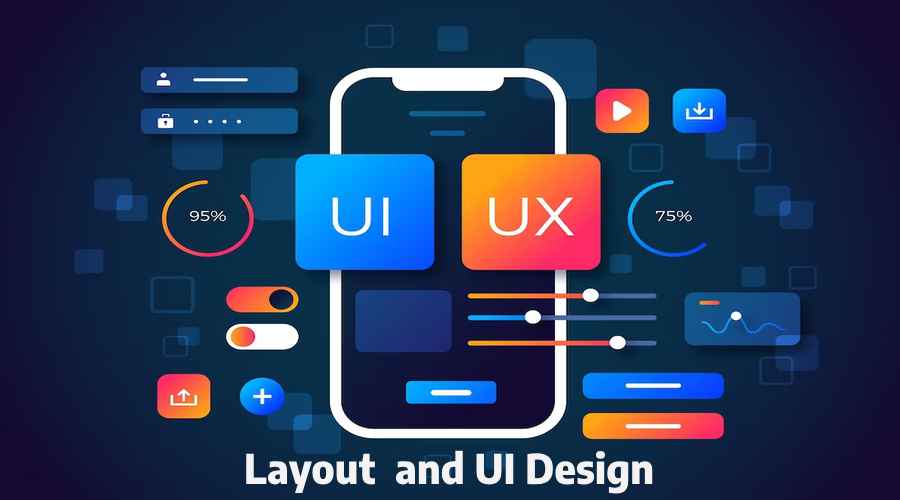
The reactive framework makes use of modern technologies like Dart programming language to allow app designers to make their customized content adaptive according to the size, shape & orientation while ensuring an optimal experience all around automatically. Therefore making it hassle-free even when dealing with different screen sizes and devices!
7. State Management
State management is an integral part of app development, and the Flutter framework has a range of options to help developers ensure their apps are efficient. Options like Provider, Riverpod, BLoC, GetX, ReEdux, and MobX allow for complex state logic to be implemented in easy-to-understand ways that don’t impede user experience or performance.
With these tools, any developer can understand how changes in one part of the codebase will affect other components – making it easier to create lightning-fast applications with great UX!
8. Networking and Data
Network and data security is a significant concern for any organization that relies on digital communication. Flutter, an open-source mobile application software development framework developed by Google, offers several benefits regarding user experience, performance, and scalability – but how can you ensure your applications remain secure?
Flutter’s sophisticated network protocols & authentication system, along with its robust APIs for integrating third-party services such as cloud hosting providers and other components used to deliver solutions like app notification systems or push notifications, ensures all the data between parties stays safe while providing high-quality user experiences. This allows developers to create more powerful apps without having to worry about their safety when transferring over networks.
9. Navigation
Navigation in the Flutter Framework is a breeze! Developers can quickly create an efficient navigation system with its robust and intuitive interface. By utilizing powerful widgets like Navigator and CupertinoPageRoute and Material Design components such as Tabs or Bottom Navigation Bar, you can easily define journeys for your users that feel natural on mobile phones and tablets.
Additionally, using named routes makes it easy to maintain clarity throughout a project while creating modifications on the fly – making custom navigation flows easier than ever before!
10. Platform Integration
Platform integration in the Flutter framework is an essential part of modern-day development. Flutter provides a powerful yet simple way to create mobile and web applications with platform-specific features like accessibility tools, push notifications, analytics tracking, and more.
With the help of this feature, developers can quickly develop cross-platform apps that run on both iOS and Android platforms without writing multiple codes for each one separately. Platform integrations allow you to add native functionalities within your app using readymade plugins, which are asynchronous, providing a better user experience.
11. Testing and Debugging
Testing and debugging are essential in developing a successful Flutter framework app. As this technology provides features such as fast development and hot reload that allow updates to the code without recompiling, there is still a need for rigorous testing and debugging of applications written with Flutter so they can run smoothly on all devices.
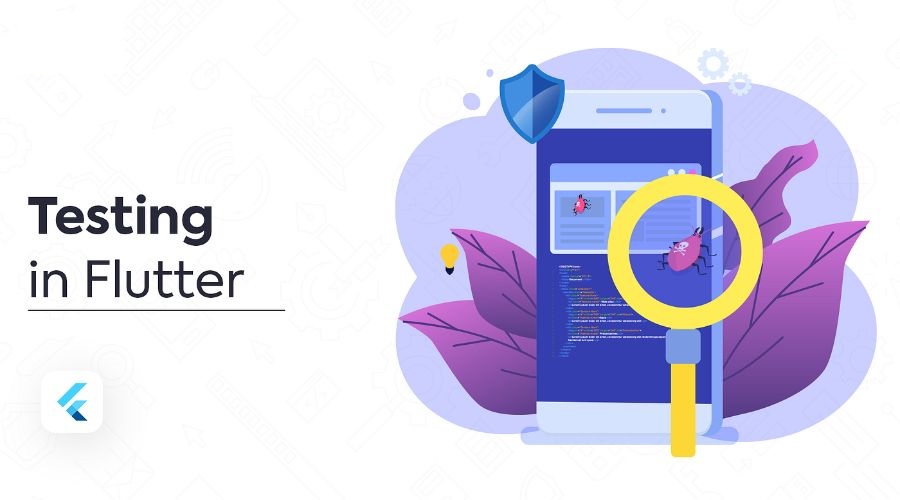
Employing best practice techniques like unit tests, integration tests, or UI test automation will help improve quality while decreasing time-to-market for your projects. Professional developers can access services from companies specializing in mobile software security auditing, ensuring reliable results when performing full system validation before launch and enhancing the user experience across all platforms.
12. Publishing and Deployment
Publishing and deploying an app with the Flutter framework is a straightforward process. Thanks to its powerful tooling, developers can quickly transition their apps from development mode into production-ready forms that deliver exceptional user experiences across all devices.
With just a few clicks of your mouse, you can create platform-specific builds for each target device and then submit them to Google Play or Apple App Store for approval in no time! As such, Flutter helps eliminate tedious manual labor while allowing us to focus on further improving our users’ overall experience by fine-tuning features faster than ever before.
Conclusion
As we look to the future of mobile development, Flutter is an increasingly viable solution. The advantages offered by this powerful framework make it an excellent choice for developers and businesses alike in 2026 and beyond. Easy setup, high performance, enhanced scalability, and bug-free coding are just some of the benefits that come with using Flutter.
It’s hard not to see why so many have chosen this platform as their go-to mobile app technology partner moving forward into 2026 and beyond! With its wide range of capabilities from web apps down to embedded systems, there really is nothing holding you back from getting started on your projects – today! We hope this blog on guide to Flutter Framework in 2026 is useful to the readers.


